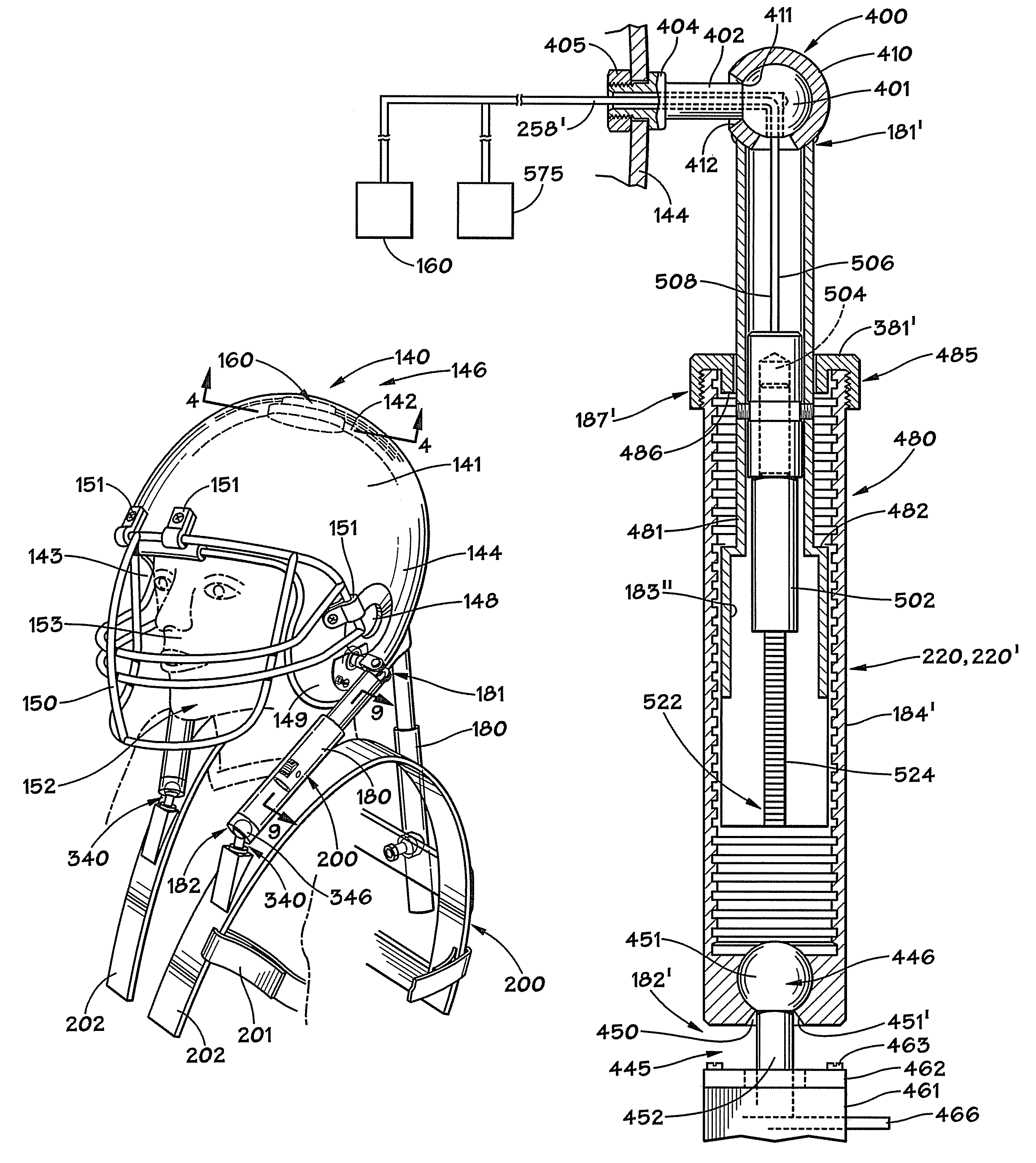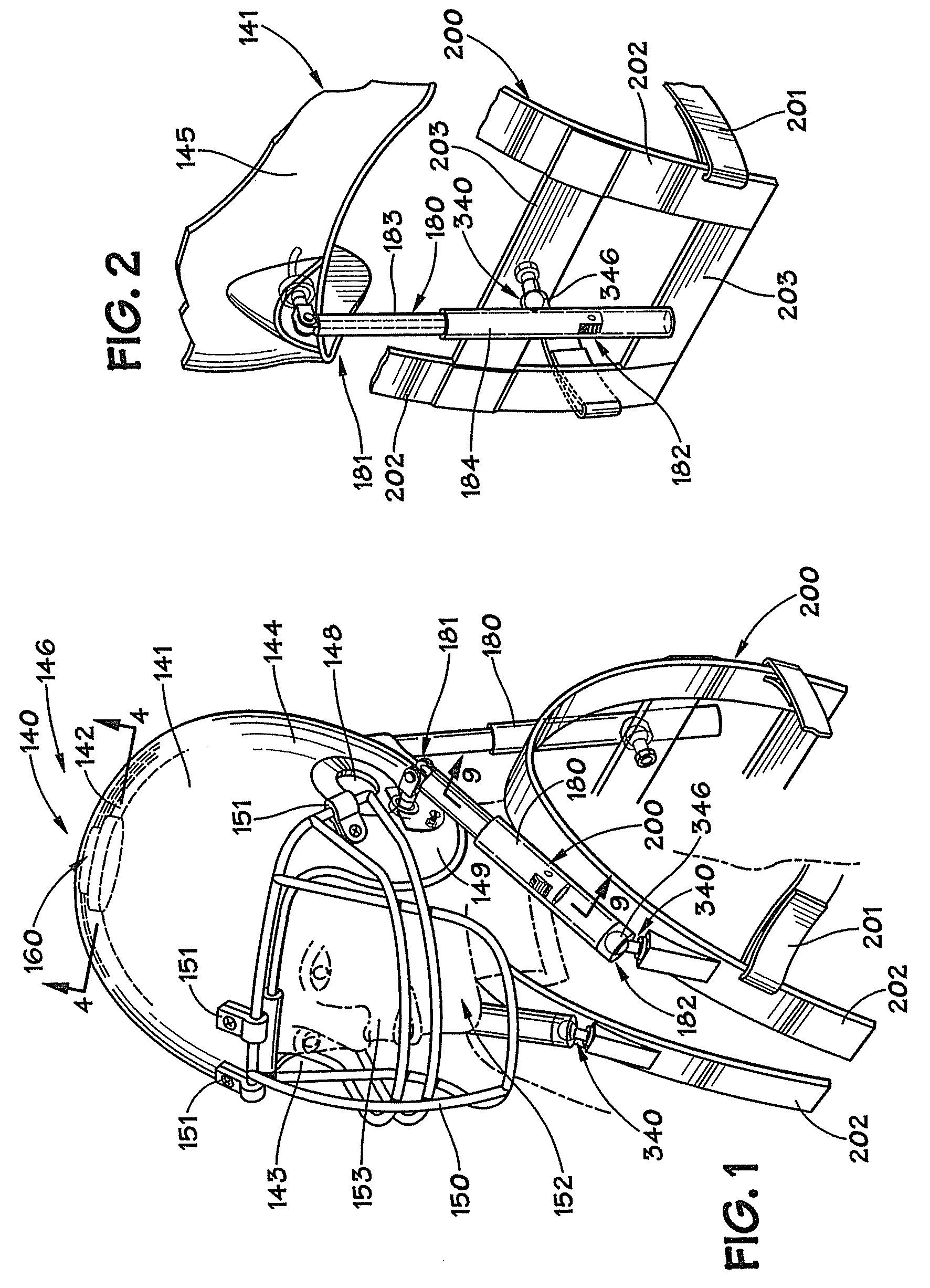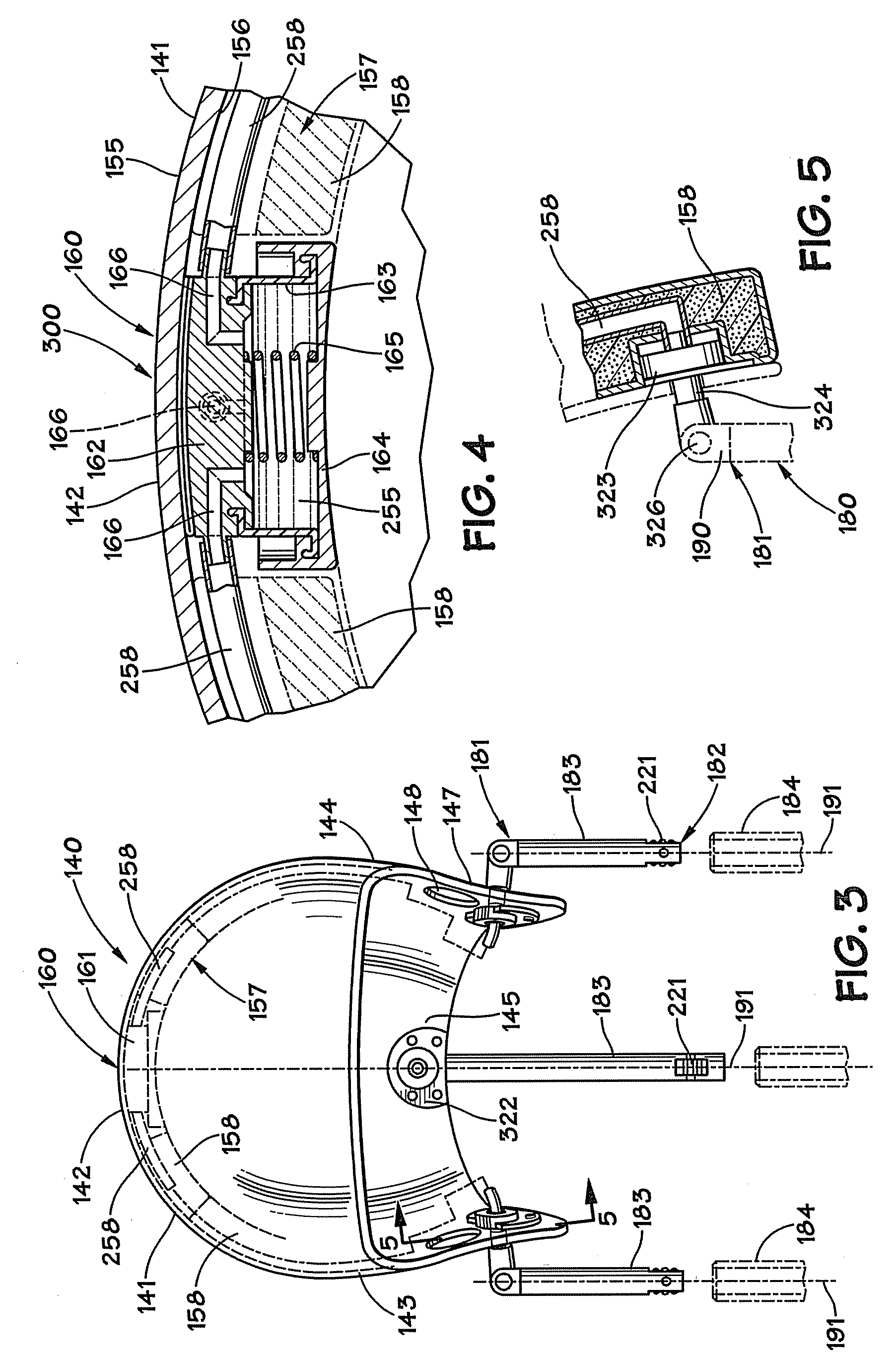Protective helmet with cervical spine protection and additional brain protection
a cervical spine protection and head protection technology, applied in the direction of protective clothing, eye treatment, helmet covers, etc., can solve the problems of not having the ability to substantially restrict or prevent the relative motion between the helmet and the player's shoulders, the bulkiness and/or unwieldiness of the components utilized with the helmet, and the helmet's shoulder pads are inadequate. to achieve the effect of limiting the range of motion
- Summary
- Abstract
- Description
- Claims
- Application Information
AI Technical Summary
Benefits of technology
Problems solved by technology
Method used
Image
Examples
Embodiment Construction
[0011]The foregoing advantages are believed to have been achieved by the present protective helmet. Some embodiments of the present protective helmet may include: a shell having an upper wall, two side walls, and a back wall; a force sensor disposed adjacent the upper wall of the shell; an acceleration sensor disposed adjacent to the upper wall of the shell, however, the acceleration sensor alternatively can be disposed adjacent to any aspect of the helmet that is associated with the shell of the helmet; at least one strut member having first and second ends, the first end of the at least one strut member associated with one of the walls of the protective helmet and the second end of the at least one strut member is associated with a harness assembly; the at least one strut member permitting relative motion between the first and second ends of the at least one strut member; and a locking assembly associated with the at least one strut member, and the locking assembly, upon a predete...
PUM
 Login to View More
Login to View More Abstract
Description
Claims
Application Information
 Login to View More
Login to View More - R&D
- Intellectual Property
- Life Sciences
- Materials
- Tech Scout
- Unparalleled Data Quality
- Higher Quality Content
- 60% Fewer Hallucinations
Browse by: Latest US Patents, China's latest patents, Technical Efficacy Thesaurus, Application Domain, Technology Topic, Popular Technical Reports.
© 2025 PatSnap. All rights reserved.Legal|Privacy policy|Modern Slavery Act Transparency Statement|Sitemap|About US| Contact US: help@patsnap.com



